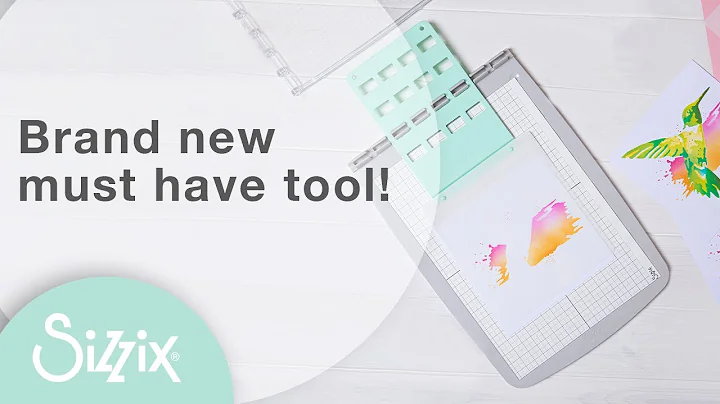Create Your Profitable Shopify Dropshipping Store Today!
Table of Contents
- Introduction
- Choosing a Niche
- Deciding on a Business Name
- Setting Up a Shopify Store
- Payment Providers
- Checkout Settings
- Shipping Rates
- Taxes
- Legal Matters
- Essential Apps for Success
- Currency Converter
- Vitals
- AfterShip
- Email Marketing Automation
- Product Reviews
- Post Purchase Upsell
- Designing Your Website
- Choosing a Theme
- Creating the Main Menu and Footer
- Creating an Announcement Bar
- Using High-Quality Images
- Setting Up Slideshows
- Writing Compelling Product Descriptions
- Importing Product Reviews
- Adding FAQ and Help Center Pages
- Creating Social Media Accounts
- Disabling the Password Page and Launching Your Store
- Giveaway Announcement
- Conclusion
Creating Your Own Brand and dropshipping Store in 2020
Are you interested in creating your own brand and starting a profitable dropshipping store in 2020? Despite the challenges posed by the coronavirus and quarantine, it is still possible to succeed in the world of ecommerce. In this comprehensive guide, I will take you through the entire process of setting up your own brand and dropshipping store, step by step. From choosing a niche to designing your website, I will provide you with valuable insights and tips to help you succeed. So let's get started and kick some ass!
1. Introduction
Creating your own brand and dropshipping store can seem daunting, but with the right strategies and tools, it can also be an exciting and rewarding journey. In this guide, I will provide you with a roadmap that will help you navigate through the process from start to finish. We will discuss product research, website design, logo creation, payment providers, shipping rates, legal matters, essential apps, writing compelling product descriptions, setting up FAQ and Help Center pages, creating social media accounts, and launching your store. By following these steps, you will be well on your way to building a successful brand and dropshipping store.
2. Choosing a Niche
One of the most important decisions you will make when starting your brand is choosing a niche to focus on. It is recommended to choose a niche that you are passionate or knowledgeable about, as this will make product research and advertising much easier. Consider what products you would personally buy and why, and use this knowledge to guide your product selection and promotion. Some popular niches include women's clothing, accessories, jewelry, sports and entertainment, phones, and products for the home.
Pros:
- Allows you to leverage your passion and knowledge
- Makes product research and advertising more intuitive
Cons:
- Limited target audience compared to broader niches
3. Deciding on a Business Name
Once you have chosen a niche, it's time to come up with a unique and memorable business name. It is recommended to use a business name generator, such as "Business Name Generator," to generate ideas for your brand. Consider using two words together or incorporating alliteration for a more appealing and memorable name. Check the availability of the .com domain name to ensure that the name is not already taken. You may also consider adding "USA" to your business name for a professional touch, especially if you plan to focus on the home products niche.
Pros:
- Creates a unique and memorable brand identity
- Adds professionalism and credibility to your business
Cons:
- Requires careful consideration and brainstorming
4. Setting Up a Shopify Store
Shopify is a popular ecommerce platform that provides all the tools and features you need to create and manage your own online store. Let's walk through the essential steps to set up your store on Shopify.
Payment Providers: It is important to set up payment providers to ensure you can accept payments from customers. It is recommended to have both PayPal and a credit card processor, such as Stripe, to offer customers multiple payment options. Consider the pros and cons of Shopify payments and choose the best credit card processor for your business.
Pros:
- Allows customers to choose from multiple payment options
- Increases trust and convenience for customers
Cons:
- Potential limitations and fees associated with specific payment providers
Checkout Settings: Customize your checkout settings to make the buying process seamless for your customers. Consider enabling guest checkout, requiring only the last name for shipping and billing addresses, and enabling address auto-completion to improve the user experience.
Pros:
- Simplifies the checkout process for customers
- Reduces obstacles that may lead to cart abandonment
Cons:
- Limited customization options available
Shipping Rates: Set up your shipping rates to provide accurate information to customers. Consider offering free shipping, as it is a popular option, especially for online shoppers. You can also offer priority insured shipping as an upsell to provide customers with added peace of mind.
Pros:
- Attracts customers with free or affordable shipping options
- Increases customer satisfaction and trust
Cons:
- Requires careful consideration of shipping costs and profit margins
Taxes: Familiarize yourself with the tax regulations in your location and ensure that you set up the appropriate tax settings in your store. While tax requirements vary, it is important to have a clear understanding of your tax obligations to avoid any legal issues.
Pros:
- Ensures compliance with tax regulations
- Prevents potential legal and financial consequences
Cons:
- Complexity of tax regulations and calculations
Legal Matters: Take care of legal matters by creating essential pages such as the privacy policy, refund policy, and cancel order policy. These pages inform customers about their rights and provide transparency about your business practices.
Pros:
- Builds trust and transparency with customers
- Helps protect your business legally
Cons:
- Requires understanding of legal requirements and drafting clear policies
5. Essential Apps for Success
Enhance your store's functionality and improve the customer experience by integrating essential apps. Here are some apps that can greatly benefit your store:
-
Currency Converter: Display prices in the customer's local currency to provide a seamless shopping experience for international customers.
-
Vitals: A powerful app that combines multiple functionalities, including a currency converter, sticky Add to Cart button, product reviews, countdown timers, and more.
-
AfterShip: Easily track and manage shipments to provide real-time updates to your customers.
-
Email Marketing Automation: Automate email campaigns to engage customers, recover abandoned carts, and drive more sales.
-
Product Reviews: Import customer reviews from other platforms to provide social proof and build trust with potential customers.
-
Post Purchase Upsell: Increase average order value by offering upsells after customers complete their purchase.
Pros:
- Improves store functionality and user experience
- Enhances marketing and customer relationship management
Cons:
- Costs associated with app subscriptions
- Potential learning curve for app integration and management
6. Designing Your Website
Designing an attractive and user-friendly website is crucial to attracting and retaining customers. Here are the key steps to designing your website:
Choosing a Theme: Select a theme that matches your brand identity and provides the desired functionalities. Free themes like Narrative, Brooklyn, and Boundless offer appealing designs and customization options.
Creating the Main Menu and Footer: Set up your main menu and footer to ensure easy navigation and access to important pages such as the shop, about us, policies, and contact us.
Creating an Announcement Bar: Utilize the announcement bar to display promotional offers, discount codes, or important information to customers.
Using High-Quality Images: Use high-quality images that showcase your products and create a visually appealing website. Consider using stock photo websites or creating your own custom images.
Setting Up Slideshows: Create engaging slideshows to highlight your products and call customers to action. Include catchy headlines and shop now buttons to encourage conversions.
Pros:
- Enhances store aesthetics and user experience
- Increases customer engagement and conversion rates
Cons:
- Requires time and effort to design and customize the website
- Limited customization options with free themes
7. Writing Compelling Product Descriptions
Crafting compelling and persuasive product descriptions is crucial to convincing customers to make a purchase. Instead of reinventing the wheel, study your competitors' product descriptions and model them. Highlight the unique features and benefits of your products, address customer concerns, and include high-quality images and customer reviews to provide social proof.
Pros:
- Appeals to customer emotions and persuades them to buy
- Enhances the perceived value of your products
Cons:
- Requires research and creativity to write effective product descriptions
- Requires continuous optimization based on customer feedback and market trends
8. Adding FAQ and Help Center Pages
Providing clear and helpful information to customers is key to building trust and reducing support requests. Create FAQ and Help Center pages to address common customer queries and offer solutions to potential issues. Use apps like Help Center to easily set up and organize these pages.
Pros:
- Reduces customer support workload
- Improves customer satisfaction and trust
Cons:
- Requires thorough understanding of potential customer queries
- May need ongoing updates based on customer feedback and changing circumstances
9. Creating Social Media Accounts
Build your online presence and engage with your target audience by creating social media accounts on platforms like Instagram and Facebook. Share captivating content, showcase your products, and interact with potential customers. Aim for at least nine pieces of content already posted to provide a sense of legitimacy and attract followers.
Pros:
- Increases brand visibility and exposure
- Provides a platform for customer engagement and promotions
Cons:
- Requires effort and consistency to create and manage engaging content
- May take time to grow a following and gain traction on social media platforms
10. Disabling the Password Page and Launching Your Store
Once you have completed all the necessary steps and are confident in your website's readiness, it's time to disable the password page and let the world see your brand. Choose a Shopify plan that suits your needs, disable the password, and start promoting your store. Utilize various marketing strategies to drive traffic and generate sales.
Pros:
- Makes your store accessible to the public
- Allows you to start generating sales and growing your business
Cons:
- Requires careful consideration of your store's readiness for public launch
- May require ongoing marketing and optimization efforts to drive traffic
11. Giveaway Announcement
To celebrate the launch of your new store, consider running a giveaway campaign. Encourage your audience to participate by commenting on why they should win, and select a winner based on their submission. Giving away your pre-built Hart home USA website can generate excitement and generate buzz around your brand.
Pros:
- Generates excitement and engagement with potential customers
- Increases brand awareness and visibility
Cons:
- Ongoing management and fulfillment of the giveaway
- Reaching a wide audience to maximize participation
12. Conclusion
Congratulations on creating your own brand and dropshipping store! By following the steps outlined in this guide, you have laid a solid foundation for your business. Remember to continuously optimize and adapt your strategies based on customer feedback and market trends. Building a successful brand and dropshipping store requires persistence, creativity, and a customer-centric approach. Stay focused, keep learning, and never be afraid to take risks. Good luck on your entrepreneurial journey!






















